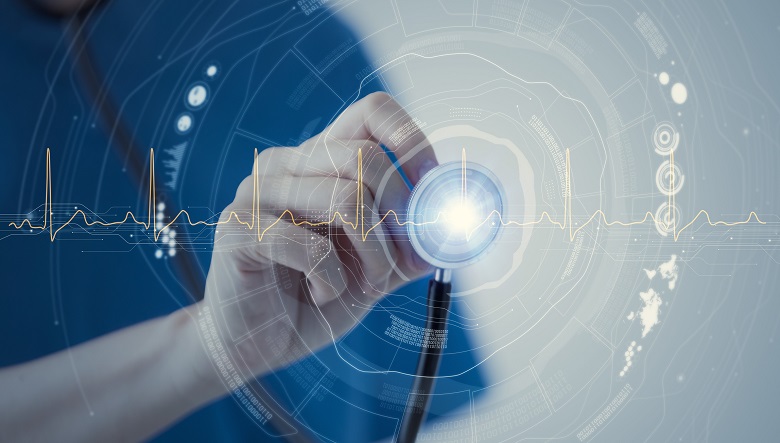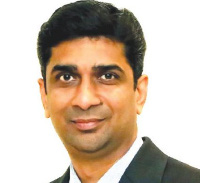
The Australian Digital Health Agency’s recent request for information seeking advice on next-generation technologies to enhance its electronic health system is good news for the future of Australia’s health sector, writes NARAYAN IYER.
Technologies such as bots, artificial intelligence (AI) and machine learning (ML), blockchain, the Internet of Things (IoT), or big data and analytics, have been making strides in industries such as manufacturing, retail, banking and finance for some time now, and the health sector also has a lot to benefit from them.

Why blockchain?
Healthcare presents one of the greatest opportunities to leverage the power of blockchain, given the industry’s need to integrate data from multiple sources such as patient and administrative data, health records, claims, and survey data.
Blockchain can radically restructure the way these medical data are stored and accessed, improving clinical and administrative data interoperability overall. Since Distributed Ledger Technology (DLT) is decentralised, it’s almost impossible to breach, providing a stronger security framework for medical data. Additionally, blockchain can be used to combat counterfeit drug prevention and detection, as well as expedite claims processing via smart contracts.
A blockchain structure also allows consumers to take back control over who — or what — has access to their data. Blockchain networks don’t store personal data the way most companies still do. Instead, data is concealed behind cryptography, making it virtually impossible to identify who the data belongs to, making privacy a key quality of blockchain technology.
However, common challenges that healthcare organisations often experience with implementing a blockchain solution are scalability and interoperability. Large scale systems, such as Australia’s electronic health system, typically warrant multiple blockchains to operate. Unfortunately, at present, blockchains largely exist in silos and this can fragment users and features.
The ADHA could therefore explore a cross-chain communication solution. This mechanism would allow a blockchain to verify information across multiple chains, enabling data to move between each chain seamlessly. However, there is still much to be done to accomplish interoperability at scale in the blockchain space, and collaboration and innovation between public and private sectors should be encouraged.
The Internet of Medical Things
The number of connected medical devices worldwide is anticipated to reach over 161 million by 2020. This increase in the IoMT market is due to the evolution of high-speed networking technologies and the increased adoption of wearable devices, smartphones, and other mobile platforms in healthcare. The speed of 5G is also accelerating that trend.
The influx of medical data generated by these devices presents a huge opportunity to improve many of the processes in the sector, such as tracking patient conditions to tracking equipment inventory and performance in the medical supply chain.
With so much data available, AI and analytics can be incredibly valuable. In fact, McKinsey & Company research indicates that AI could deliver 44 per cent greater value to healthcare.
By leveraging AI and data analytics, organisations can examine large and complex varieties of data using predictive modelling to uncover hidden patterns, pathology trends, patient preferences, unknown correlations and other useful insights to improve healthcare providers’ decision-making process.
If the ADHA aims to exploit a network of intelligent devices as a means to improve data interoperability, ensuring that valuable insights can be extracted from it should be a priority. This requires a system of interconnected technologies involving IoT, AI, and data analytics.
Moreover, concerns around data privacy are undeniably a major roadblock to tech adoption in healthcare. Ensuring all data is, and remains, anonymised, will be crucial to garnering trust from consumers.
Where do bots fit into all of this?
“The robot will see you now.” We’ve seen this headline countless times, and while the unrealistic idea of artificially intelligent doctors sprouts both fantasy and concern, there is a place for their customer service counterparts.
The increasing complexity of the healthcare system along with rising demand for services and staffing shortages has left a gap only technology can fill. Fortunately, bots and conversational AI can address this customer service issue.
With individuals increasingly looking for medical information online, bots could provide a safe support to respond to patient requests with legitimate information. The same goes for healthcare providers who need better solutions to access assistance and information easily, and free their time to focus on patients. If the ADHA seeks to explore new solutions to improve customer experience and doctors’ working conditions, bots could very well be an answer.
A framework for the future
Moving forward, there are a great deal of things to consider when looking to next-generation technologies to solve today’s challenges. It is important to consider the entire spectrum of innovations already transforming other industries. As with any innovative technology, ultimately, the focus should be on identifying the purpose of each technology for healthcare.
* Narayan Iyer is Country Manager ANZ at Cognizant
Comment below to have your say on this story.
If you have a news story or tip-off, get in touch at editorial@governmentnews.com.au.
Sign up to the Government News newsletter